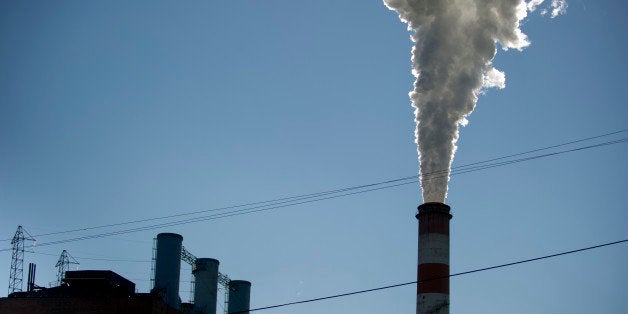
WASHINGTON -- The Supreme Court on Monday ruled against an Environmental Protection Agency regulation limiting mercury and other toxic emissions from power plants, undermining the Obama administration's drive to cut pollution from electricity generators.
The case looked at the EPA's regulation of mercury and other emissions from power plants under the Clean Air Act, which Republicans have attacked as a "war on coal" and an example of presidential overreach.
The EPA interpreted the law "unreasonably" when it failed to consider the costs of compliance with the new regulations, the court ruled 5-4 in an opinion written by Justice Antonin Scalia.
"EPA strayed well beyond the bounds of reasonable interpretation in concluding that cost is not a factor relevant to the appropriateness of regulating power plants," concluded the majority.
Justice Elena Kagan, joined by Justices Ruth Bader Ginsburg, Stephen Breyer and Sonia Sotomayor, wrote a scathing dissent that argues that the EPA did consider the costs of complying with the regulations -- just not at the initial stage of determining whether or not to regulate mercury emissions in the first place.
"Over more than a decade, EPA took costs into account at multiple stages and through multiple means as it set emissions limits for power plants," wrote Kagan. "And when making its initial 'appropriate and necessary' finding, EPA knew it would do exactly that -- knew it would thoroughly consider the cost-effectiveness of emissions standards later on."
The majority's interpretation, Kagan argued, is "a peculiarly blinkered way for a court to assess the lawfulness of an agency’s rulemaking."
"The Agency acted well within its authority in declining to consider costs at the opening bell of the regulatory process given that it would do so in every round thereafter -- and given that the emissions limits finally issued would depend crucially on those accountings," wrote Kagan.
The EPA finalized rules limiting the release of mercury, heavy metals and acid gases from power plants in December 2011. While many newer power plants have technology to curb those hazardous releases, the rules target plants that still do not capture those emissions. The rules affect about 600 U.S. power plants, the majority of which are fueled by coal.
Industry groups and 23 states challenged the rule, arguing that the EPA failed to take into account the cost of compliance, which they put at $9.6 billion.
The EPA argued that the health benefits from cutting emissions would be at least triple the compliance costs.
"We are reviewing the decision and will determine any appropriate next steps once our review is complete," said EPA spokeswoman Melissa Harrison on Monday. "EPA is disappointed that the Court did not uphold the rule, but this rule was issued more than three years ago, investments have been made and most plants are already well on their way to compliance."
The question before the court hinged on the interpretation of a line in the Clean Air Act stating that the EPA "shall regulate" emissions from electric utilities if the agency finds that "such regulation is appropriate and necessary." The court assessed whether the EPA's interpretation of the word "appropriate" had to include the costs of compliance.
"It is not rational, never mind 'appropriate,' to impose billions of dollars in economic costs in return for a few dollars in health or environmental benefits," wrote Scalia in the majority opinion.
Environmental groups criticized the ruling, and argued that the EPA should be able to tweak the mercury rule to comply with the court's decision.
"The Court has sided with the Dirty Delinquents -- the small percentage of coal-fired plants that haven't cleaned up -- and against the majority that are already protecting our children from mercury and other toxic pollutants," said Environmental Defense Fund President Fred Krupp in a statement. "It's critically important for our nation that these life-saving protections remain in place while EPA responds to the Court's decision, and EDF will focus its efforts on ensuring these safeguards are intact."
The mercury rule is one of several major regulations from President Barack Obama's EPA limiting emissions from power plants, specifically units that are coal-powered. The agency is finishing rules limiting greenhouse gas emissions from both new and existing power plants as well, with the final rules expected within weeks.
A federal appeals court upheld the regulations in 2014. The Supreme Court heard oral arguments in March.
Read the full decision here:

